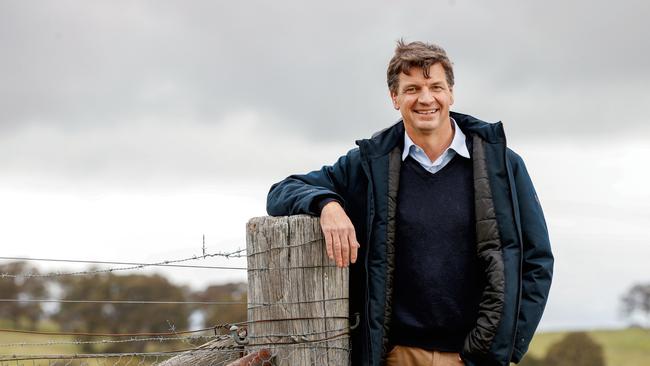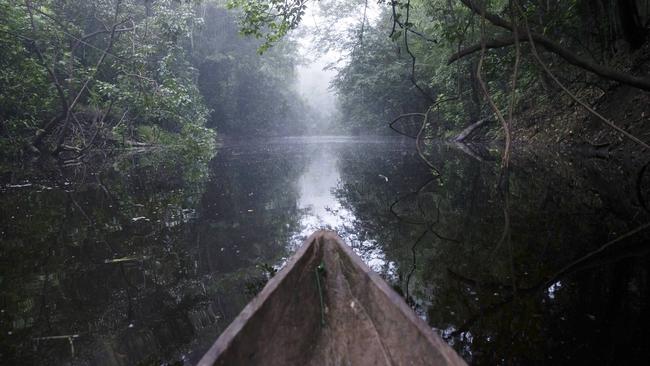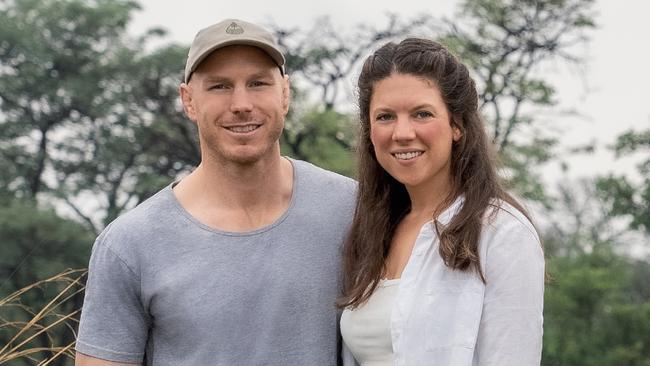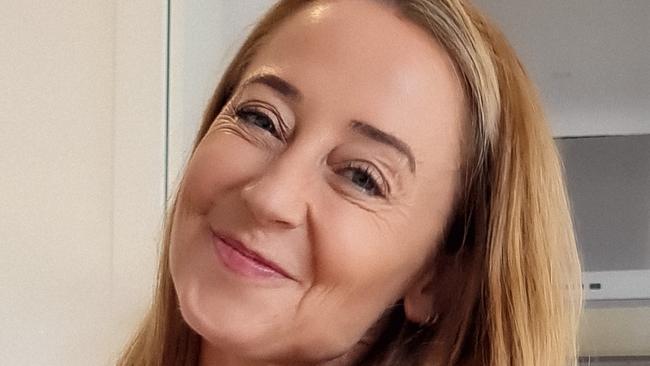How to flatten our electricity bills, using our cars
A reality where the energy stored in your car is plugged in to electrify your home edges ever closer.

This story appears in our upcoming The List: Green Power Players 2022 out on Friday.
Along with the dire double of death and taxes, there are some other unpleasant certainties we all accept: the fact that traffic will undoubtedly get worse, politicians will fall and power bills will rise.
But for once, something about the future looks very bright indeed, because a new form of technology promises to allow all of us to power our homes, and flatten our electricity bills, using our cars.
And because these new vehicles — which it’s best to think of as large, attractive-looking batteries on wheels – can easily be run on sunlight, our petrol bills should drop as well. Yes, a future in which things actually get cheaper sounds about as likely as harbourfront houses in Sydney becoming more affordable, or something a politician might promise in the run up to an election, but this is already happening.
It’s called Vehicle to Grid, or V2G, technology and it will, in the near future, allow you to drive to work or a shopping centre, hook your car up to someone else’s solar panels and fill your car with free energy (which, helpfully, they’ve also sourced for free, from the sun), before taking that power home and using it to run your house for the next two or three days.
Of course, if you have your own solar panels, you’ll never need to worry about sunny days, or paying for electricity at night, because you’ll be able to power up that giant battery on wheels sitting in your driveway, and then suck the volts back out of it again whenever you need them.

What V2G allows you to do, via a bi-directional charger, is send power in both directions between your house and your electric vehicle (and soon enough, everyone will have to have one of those – many countries are set to outlaw the sale of petrol and diesel vehicles and in the UK it will happen as soon as 2030. which means car companies will eventually stop making them altogether) or the other way around.
It’s already a compulsory inclusion on all new EVs sold in Japan, as Tim Washington, the founder of Jet Charge, an Australian company that installs charging infrastructure, explains.
“Bi-directional charging has been mandated in Japan for some years, because they wanted people to have the ability to run their homes from their cars during natural disasters, like earthquakes,” Washington says.
“They also have these fleets of Nissan Leaf EVs which they send out to areas where the power has gone down in that kind of emergency, and people can then plug into them to do things like charge their phones and so on.”
Speaking of Japanese cars, there are already two brands selling V2G-capable vehicles in Australia – Nissan and Mitsubishi – but Washington says that plenty more will follow in the near future.
“What I find with vehicle-to-grid technology is that it’s one of those things where, when you explain it to someone, it just blows their mind – the idea of using the power stored in your car to run your home, and not just overnight but for days,” he says. “Really it’s a matter of time before it will just be so common that everyone will have it, and people won’t remember what it was like before. By 2025, all EVs will offer V2G, so you’ll get your new electric car and you’ll just automatically add the V2G charger when you buy the car, and it will be installed at your house, so every time you plug in – and remember, your car just sits still 90 per cent of the time – it can power your home.
“And everywhere you drive, by then, will have chargers – supermarkets, your work, your gym; we have solar panels at our office and give free charging to all our employees already – so you charge up when you’re out, and then you discharge at home.
“The bonus is that it means lowering the price of electricity for everybody, everywhere, and it makes your car a significant asset.”
The rise of ride-sharing and the push for people to use public transport rather than their own vehicles – in a bid to reduce that certainty of traffic getting worse – might theoretically decrease the number of people buying new cars, but Washington believes the usefulness of the battery-on-wheels idea will be so irresistible that people will even buy second-hand EVs, largely to keep plugged in to their homes.
-
“It’s one of those things where, when you explain it to someone, it just blows their mind – using power stored in your car to run your home ...”
— Tim Washington, Jet Charge
-
THE NEW GREEN ECONOMY

Twiggy’s green ambition put to the test
Andrew Forrest is convinced his ambitious green hydrogen plans are a key plank in the battle against global warming. But can the iron ore billionaire pull off the ultimate pivot?

‘Cats can be herded if there’s a clear goal’: Angus Taylor
The government’s position on climate change is built on respect, says Industry, Energy and Emissions Reduction Minister Angus Taylor.

‘It’s our responsibility to be the adults’: Wikramanayake gets real
In a rare interview the Macquarie Group chief reveals its highly calculated approach to renewables investment and the discussion with her teenagers that crystallised the need to take action.

Is nature really at the centre of the ‘green dream’?
Looking after the land makes sense but in the end, someone has to pay. Good intentions will only go so far.

Rich-listers embrace climate shift
It’s no longer a question of choosing profit over planet. A new generation prioritises impact investing to retrain focus of their family wealth on a climate positive yet lucrative future.

Why climate change is a business opportunity
The transition to carbon neutrality will require trillions. For the financial sector this means not just the opportunity to fund the future, but to profit from it.

Rugby great takes climate fight to Canberra
David Pocock and wife Emma are playing to win with their commitment to turn talk into action on environmental issues.

Billionaire piles pressure on big Aussie polluters
Australia’s enormous resource companies are on notice as a new breed of emboldened financial agitators take an aggressive – and often effective – stance on climate accountability.

Could your car power your house one day?
A reality where the energy stored in your car is plugged in to electrify your home edges ever closer.

Cameron Adams on being a DJ loving climate warrior
Decisive action on climate matters as much as taking democratised design to the world for the co-founder of tech heavy-hitter, Canva.

The Australian names to know in sustainable food and wine
From the man behind Sydney’s fish eatery Saint Peter to a self proclaimed meat-eating vegan, these Australians know a thing or two about sustainable food and wine.

Alan Finkel: ‘Technology is enabled by government’
Now is the moment as government, industry, technology and communities embrace both the urgency and practical reality of emissions reduction.

Climate solution may lie beneath our feet
One answer to the global emissions question is right beneath our feet, says newspaper publisher turned commercial cattle farmer Alasdair MacLeod.

Is this the cure for electric vehicle range anxiety?
Does the idea of electric vehicles give you range anxiety? Car companies have a cure for that, and it’s called a “PHEV”.

Solar plan set to shine
Australia’s appetite for solar continues to surge, driving everything from households and electric vehicles to mining projects seeking a cleaner future.

Six boundary-pushing tech innovations
From a solar-powered outdoor oven to robotic lawnmowers, the latest in green technology sets you up for a future-facing daily life.

Can an office be sexy … and sustainable?
A leading design studio experiments with sustainability by stealth at their innovative – and sexy – Sydney HQ.

The Australian denim brand leading the charge
Start unpicking the fashion industry and the cost to climate is clear. But Queensland’s Outland Denim is determined to break the pattern.

Sky’s the limit: Inside Australia’s greenest buildings
Concern for the environment and employees alike is at the heart of these top four sustainable, and awarded, new commercial spaces. SEE THE PICTURES

Living sustainably is harder than it looks
Two very different lives, one urgent shared challenge: to take concrete steps towards more sustainable daily choices.

Skincare brands put planet before profit
A swath of pioneering skincare brands are setting new low-impact benchmarks in the process.

Solid-state batteries ‘will secure EVs’ future’
For electric vehicles to truly capture the public’s imagination – and wallets – charging certainty and speed is necessary. Enter the solid-state battery.

The fashion innovators to know in 2022
French house Hermès turns luxury leftovers into pieces of creative expression, plus the latest in ethical design and the rise of resale.
There are, of course, already home batteries on the market, such as Tesla’s $14,000-ish Powerwall, but Washington believes V2G technology will make them largely unnecessary.
“I think it will take a big market away from stationary storage, just because logically I don’t see why you would need home battery storage,” he says.
“Why would you have a home battery when you can have literally five times as much capacity?”
The system also makes it possible for home owners using bi-directional charging and car storage to sell excess power back into the grid, as some Nissan Leaf owners are already doing in the UK. In Japan, Nissan is also trialling a system that allows drivers to sell electricity to the grid in exchange for parking credits or coffee at their local cafés.
While you may not have heard much about V2G before, Australia is actually up and running with one of the world’s largest trials of the technology in Canberra.
OUT THIS FRIDAY: The List - Green Power Players 2022. Don’t miss your copy of the 112-page inaugural edition
ARENA (Australian Renewable Energy Agency) is taking part in a $6.6 million experiment involving 50 Nissan Leafs, which will be used by the ACT Government during business hours and plugged into the power network when not being driven, returning energy to the grid when network demand is high and thus boosting grid security.
The current trial is called REVS (Realising Electric Vehicle-to-grid Services) and it is designed to examine how fleets of EVs could be used to help support the electricity grid.
Dr Bjorn Sturmberg from the Australian National University is part of the project and explains that the power stored in EVs can provide security and help prevent blackouts.
“When there’s an unexpected mismatch, such as when a storm knocks out a power station, the vehicles can jump in and provide the power from their batteries into the grid, in a matter of seconds, to help restore that balance,” he explains.
Sturmberg points out that if all of Australia’s 19 million cars were electric, they could hold, and help distribute, an enormous amount of energy, particularly at night when demand is high and fewer cars are being driven.
“One EV battery typically contains as much energy as an average household uses across two to four days,” Sturmberg says.

“On top of this, it can react to events in a tenth of a second. The fact that they’re available to be called upon to provide power at very, very short notice. That’s a really valuable service.”
Of course, as is often the case with the early adopter stage of any new technology, the current price of entry to the world of V2G is quite high. A new Nissan Leaf e+, which is a smallish city car, will set you back $60,490, but the tech is installed and ready to go, once you’ve also bought yourself a bi-directional charger for your home (you might also need to invest in solar panels, for maximum value, which can cost anywhere from $5000 to $10,000, or more).
Jet Charge will start installing the V2G infrastructure in people’s homes next year, with a starting price of approximately $10,000 per unit, but Washington says he has a waiting list of home owners, and corporate customers, ready to go.
“People are motivated by the idea of energy freedom and value, as well as environmental factors, but there’s also the fact that people want to have what’s cool and new; that’s just early adopter syndrome,” he explains.
“They like it because they can say to people, ‘Hey, did you know, I can power my house using my car?’.”
Washington also predicts that demand, and increased supply, will drive down the price of bi-directional chargers, possibly by as much as half, in the next few years, and most major car companies in the EV space are already working on making their vehicles V2G ready.
By 2025, then, we could be living in a better and, almost unbelievably, cheaper future.
This story appears in our upcoming The List: Green Power Players 2022 out on Friday.

To join the conversation, please log in. Don't have an account? Register
Join the conversation, you are commenting as Logout